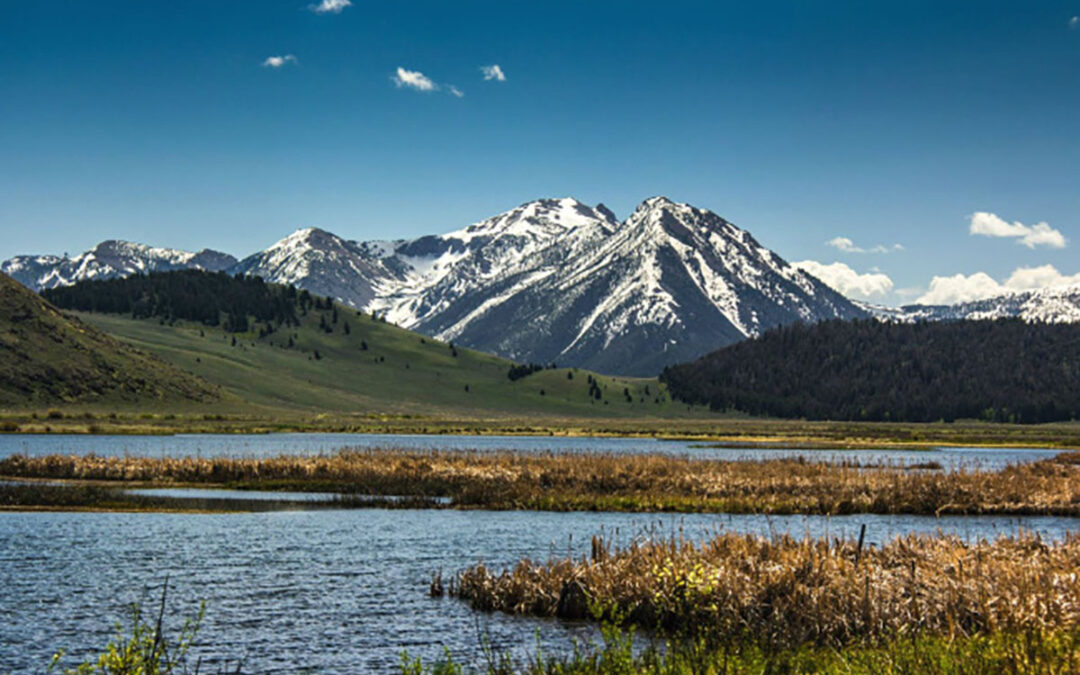Photo: George Jordan, USFWS
The Alliance for the Wild Rockies is thrilled to announce the U.S. District Court granted our request for a Preliminary Injunction to immediately stop the U.S. Fish and Wildlife Service’s construction of a permanent water pipeline in the Red Rock Lakes Wilderness in southwestern Montana. Our fellow plaintiffs were Wilderness Watch, Gallatin Wildlife Association and Yellowstone to Uintas Connection.
This ill-conceived plan by the U.S. Fish and Wildlife Service and Montana’s Department of Fish, Wildlife, and Parks was just another exercise to deny real, long-lasting protection and restoration to Montana’s last remaining populations of fluvial, river-dwelling, arctic grayling in the Lower 48 states.
Listing the grayling for protection under the Endangered Species Act would be a much more effective and efficient way to keep the grayling in both Upper Red Rock Lakes and Big Hole River from going extinct. Instead, these agencies decided to violate the Wilderness Act with an intrusive construction project and the Court said “no” for many good reasons.
The Fish and Wildlife Service’s pipeline project involves digging a mile-long, six-feet deep trench and installing a 14-inch pipeline in the Red Rock Lakes Wilderness to theoretically provide better winter habitat for Arctic grayling in this shallow lake which averages 6 ft deep.The plain language of the Order makes it crystal clear the Court understood the dubious and illegal nature of this poorly designed project. As the Court noted:
- “It is interesting, however, that the Service has chosen to elevate the Centennial Valley grayling population over all other wilderness purposes while simultaneously taking the position that this distinct population segment is neither important enough nor imperiled enough to be listed.”
- “But, as conceded by the Service and Montana Fish, Wildlife and Parks at the hearing, prior oxygenation efforts have all been unsuccessful and real-world impacts have not lined up with the agency’s modeling estimates. Rather, the record indicates that the agency is experimenting with a new management approach that it thinks will work, but is likely not a final solution. And even if such an ‘adaptive’ approach will help to conserve arctic grayling in the short term, it is not clear that it comports with the Wilderness Act.”
- “The Service itself concluded that the proposed action would have a net negative effect on the Wilderness Character rating for the area.”
- “The Wilderness Act cannot be reduced, as phrased by Plaintiffs, to mere ‘paperwork hurdles.’”
There is no evidence that this project would actually help adfluvial (lake dwelling) grayling that spend their lives in lakes except for when they spawn in streams. Moreover, there are abundant adfluvial grayling in 30 different lakes in southwest Montana.
On the other hand, Fluvial Arctic grayling spend their entire lives in rivers and streams and have been driven from most of the Upper Missouri River Basin range due to habitat destruction and irrigation dewatering. Yet for nearly 30 years the Fish and Wildlife Service has continued to deny petitions from environmental groups and individuals to provide Endangered Species Act protections to the tiny remaining fluvial population in the Big Hole River.
The reality is grayling are most threatened by impacts to habitat including water diversions for irrigation, livestock grazing, and continued sport fishing in their limited spawning streams. But the federal and state agencies ignored those impacts and plowed ahead with their wilderness degradation plan.
Red Rock Lakes is a wilderness area, not an aquarium for fisheries agencies’ experiments. The law says wilderness must be protected, the Court agreed, and the project has been stopped in its tracks, which is exactly what needed to happen.
Please email the Director of the U.S. Fish and Wildlife Service, Martha Williams and ask her to protect Arctic grayling by listing them as endangered under the Endangered Species Act, Her email address is martha_williams@fws.gov.
Please also consider making a donation to the Alliance for the Wild Rockies to continue our fight to protect native species and their habitat as wilderness by working to pass the Northern Rockies Ecosystem Protection Act.
Mike Garrity is the Executive Director of the Alliance for the Wild Rockies.
